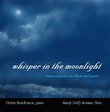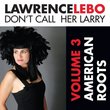| All Artists: Antonio Vivaldi, Neville Marriner, Academy of St. Martin-in-the-Fields Title: Vivaldi: The Four Seasons [Le Quattro Stagioni] Members Wishing: 1 Total Copies: 0 Label: Decca Release Date: 3/14/2000 Album Type: Original recording reissued, Original recording remastered Genre: Classical Styles: Forms & Genres, Concertos, Historical Periods, Baroque (c.1600-1750), Instruments, Reeds & Winds, Strings, Symphonies Number of Discs: 1 SwapaCD Credits: 1 UPC: 028946623220 |
Search - Antonio Vivaldi, Neville Marriner, Academy of St. Martin-in-the-Fields :: Vivaldi: The Four Seasons [Le Quattro Stagioni]
![Vivaldi: The Four Seasons [Le Quattro Stagioni]](https://nationalbookswap.com/cd//l/63/9163/6069163.jpg) | Antonio Vivaldi, Neville Marriner, Academy of St. Martin-in-the-Fields Vivaldi: The Four Seasons [Le Quattro Stagioni] Genre: Classical
|
Larger Image |
CD DetailsSimilar CDs
|
CD ReviewsEccentric interpretation J. Buxton | Waltham, MA United States | 04/13/2000 (4 out of 5 stars) "I can almost guarantee you have never heard the Four Seasons like this. There are abrupt changes in speed and dynamics throughout and some interesting trills and flairs. This is not an "authentic" performance, although it is clear Marriner put much thought into each phrase. While on the whole this is a fine version, and the remastered sound is excellent, it lacks a little bite in some key passages. Sometimes Marriner brings the orchestra to a hush at just the moment when I expect a climax. Perhaps I have been too conditioned by other versions I own. In any case, I prefer the version by Il Giardino Armonico on the Teldec label as my top choice." Musicianship=5 stars, pictorialism=3 stars Yi-Peng | Singapore | 05/02/2006 (3 out of 5 stars) "Dear Vivaldi lovers, please forgive me for disagreeing that this touted "classic" Marriner/ASMF is the best Vivaldi Seasons of all time. It may have been the first version I heard, but despite its impeccable musicality I found it lacking in pictorialism.
Yes, Marriner and the Academy provide a velvet carpet for Alan Loveday's clean, articulate violin-playing. His rhythms are crisply sprung and well-suited to the dancelike sections of the work, especially the opening movements of Spring and Autumn. Yes, Simon Preston engages in a lively dialogue between continuo and orchestra with his harpsichord and organ-playing (just listen to the Bartokian eerieness of the opening of Winter), yet it seems to deflect attention to himself when we should be more focussed on the overall character of the music (i.e. we must imagine the natural environment that Vivaldi was trying to depict). This is where my good words about this performance end. The weakness of Loveday's musicianship is that often in this performance we finds that he plays it safe, and the most pictorial passages (eg the summer storm, the tipsy drunkard in Autumn) sound rather tame. Yes, his runs are articulate and clear, but somewhat detached from the sonnets that Vivaldi wrote for this work. But he still produces a velvety tone from his instrument and is at his best in the slow movements of the concertos, especially the romantic slow movement of Winter. The Academy clearly has a great time with the music, and its musicianship offers many felicities, but is somewhat tame too, especially during the hunting finale of Autumn, treated squarely as a courtly dance rather than a vigorous passage that stimulates the imagination. My choice recommendation for a modern-instrument Vivaldi Seasons would be the DG recording by Gil Shaham and the Orpheus Chamber Orchestra. His fiddling is the right mix of the virtuosic and the lyrical, and his collaboration with the Orpheus musicians allows us to hear them rediscover the music as if it were a tone poem. Yet at the same time my ultra-definitive recommendation is Standage's DG Archiv version with Pinnock. Yes, their instruments sound strange and off-key to our untrained ears, but there is gusto and life in this performance, and they are more trusting of the pictorialism in Vivaldi's music. In short, yes, I do not dispute the musicality of this performance but I beg to differ from the Penguin Guide and Gramophone on whether this is the best version. For those who want to hear the music in its glory, do consider this, but for those who want a pictorial version of the work, Shaham and Pinnock are worth considering." |

 Track Listings (21) - Disc #1
Track Listings (21) - Disc #1


